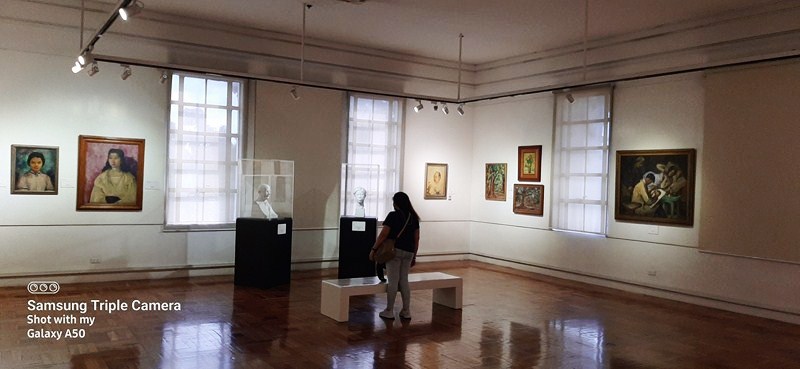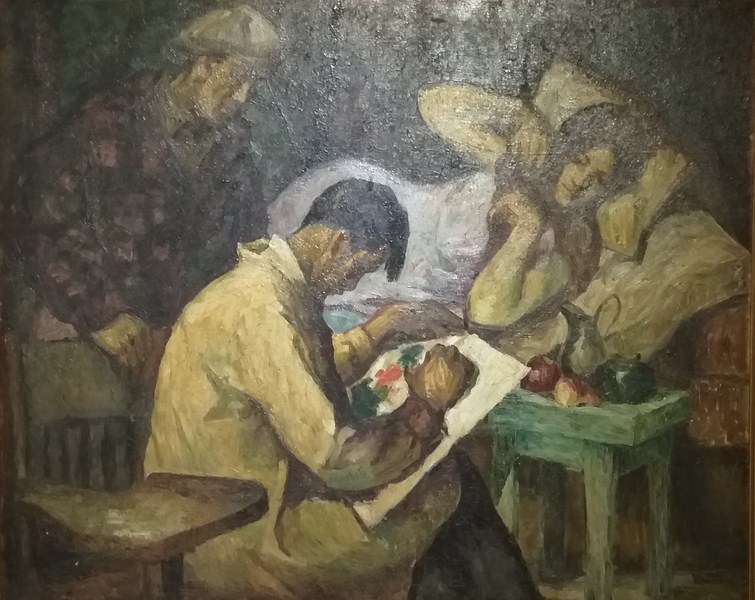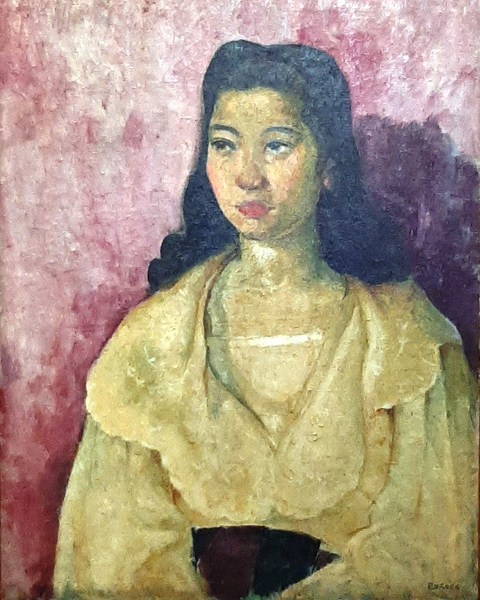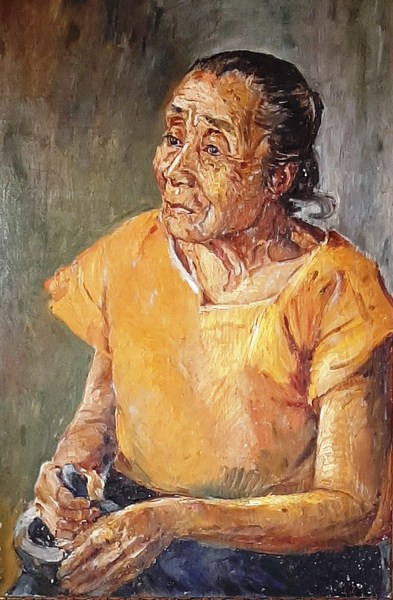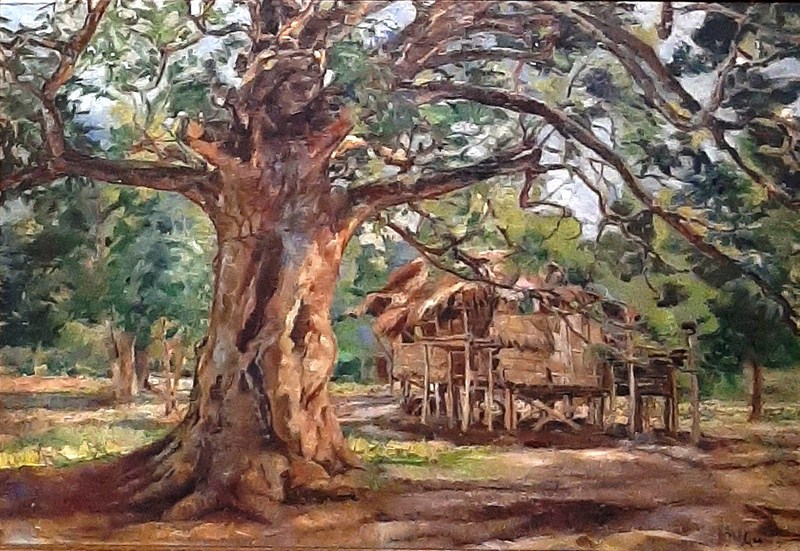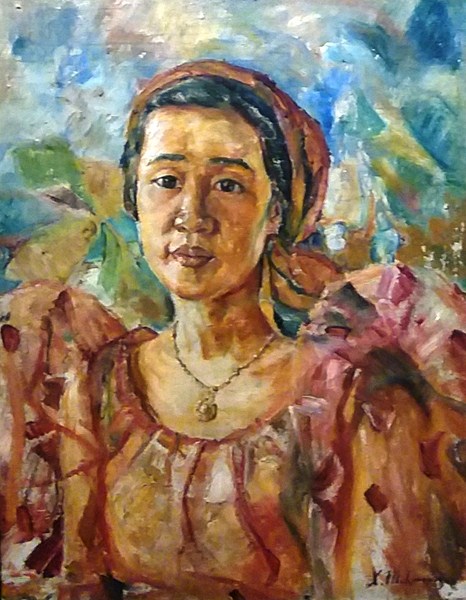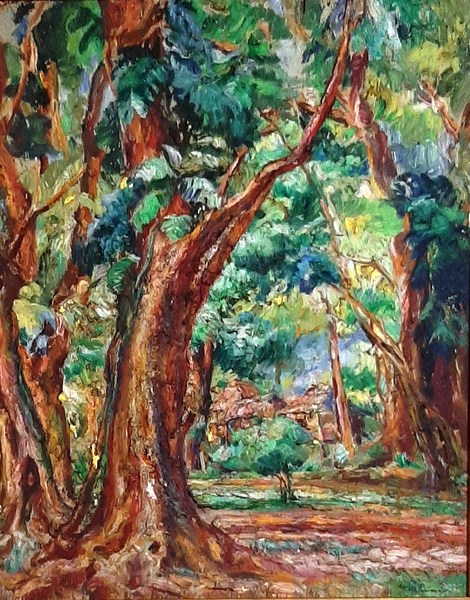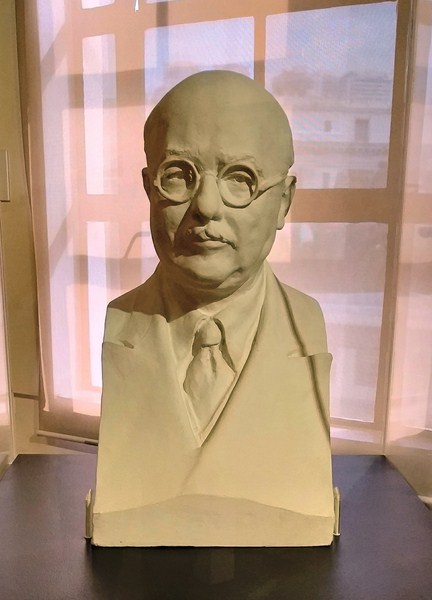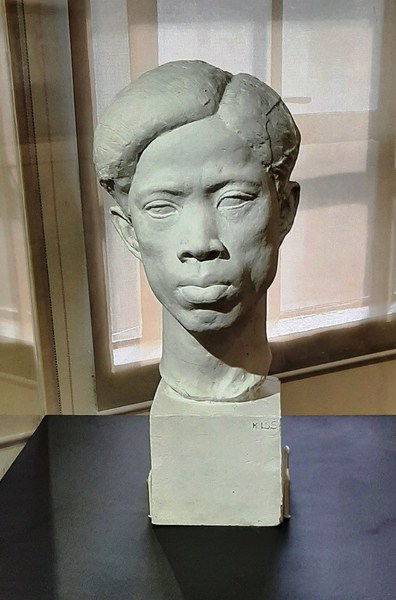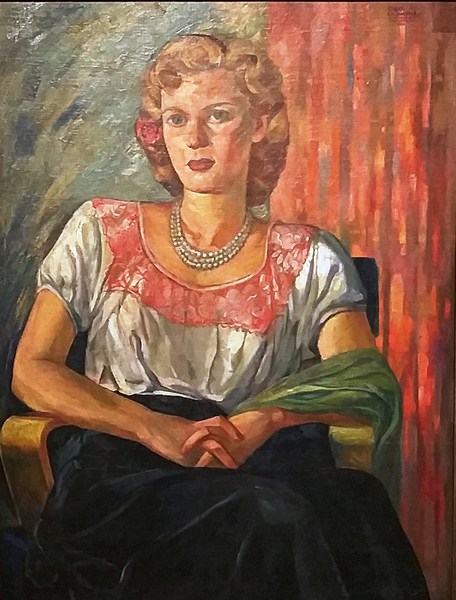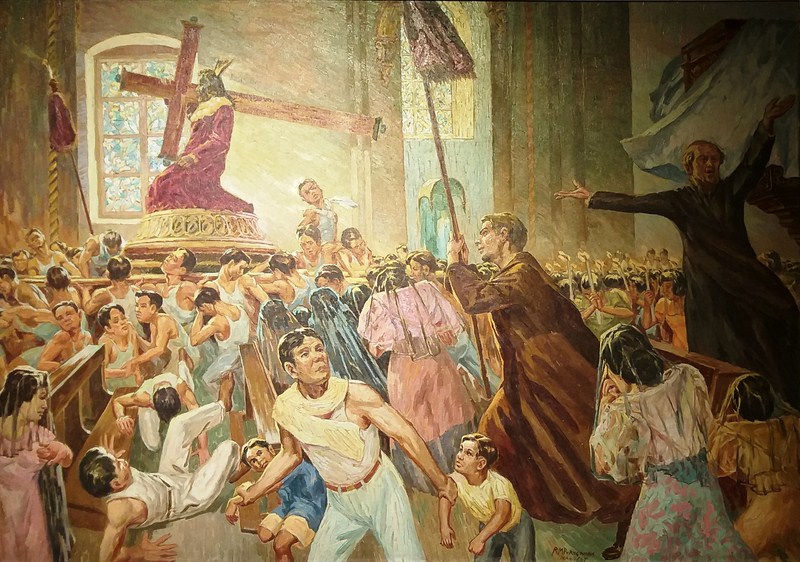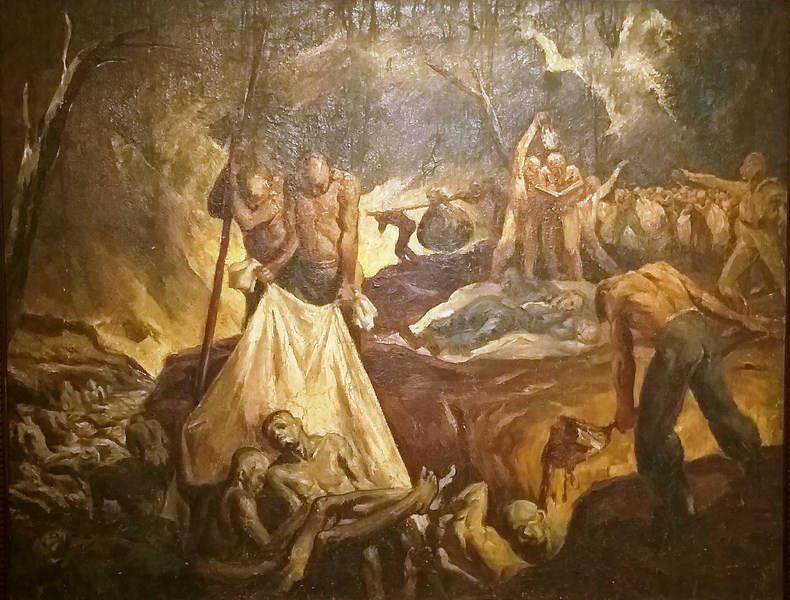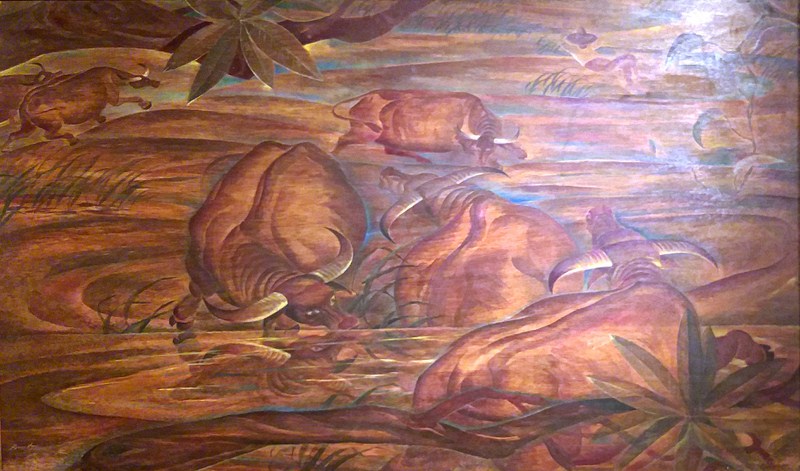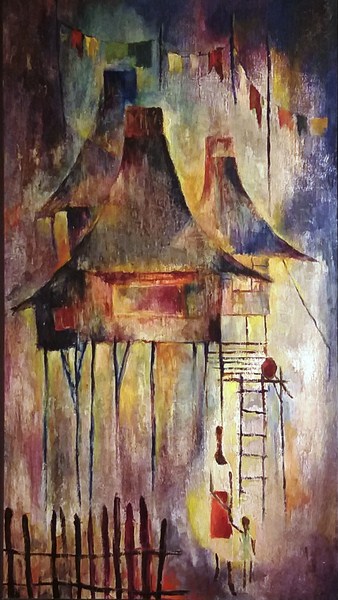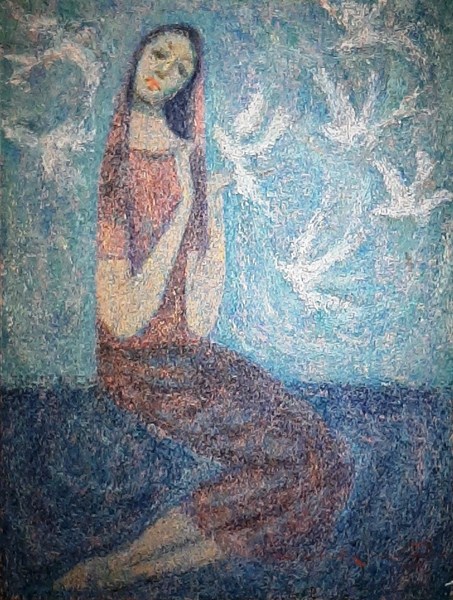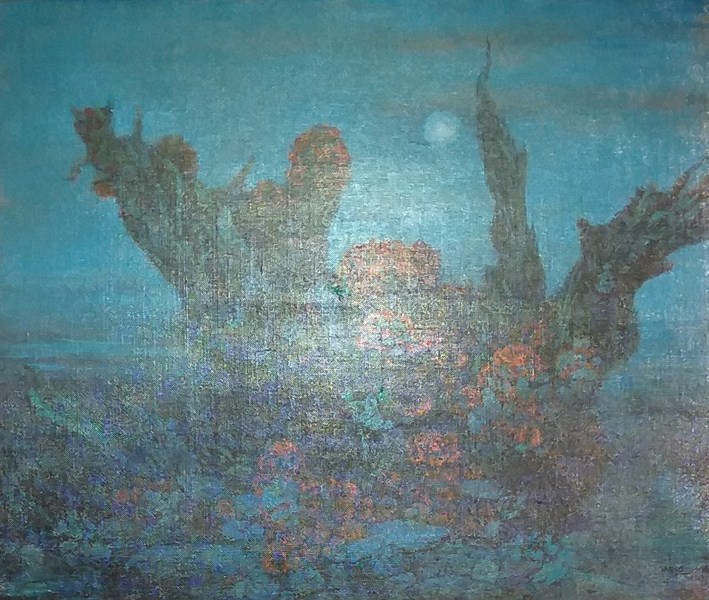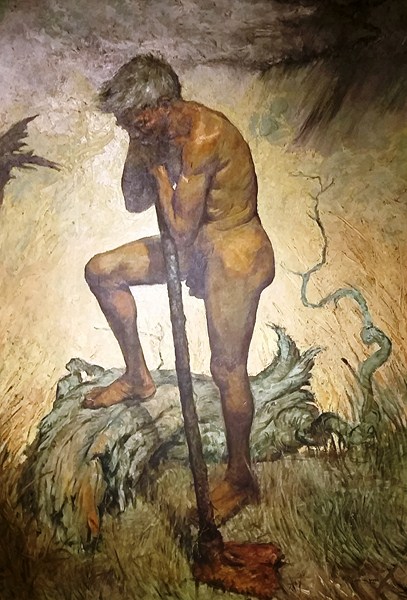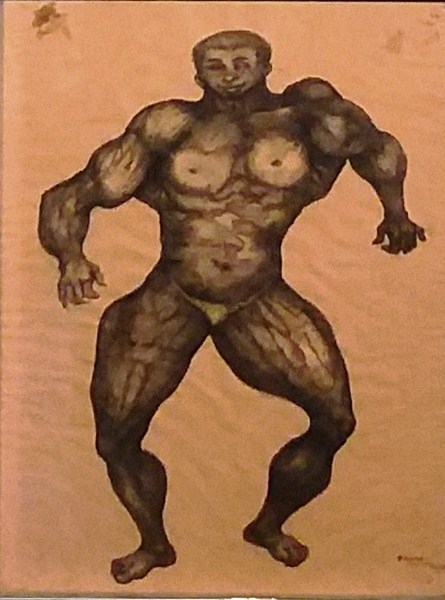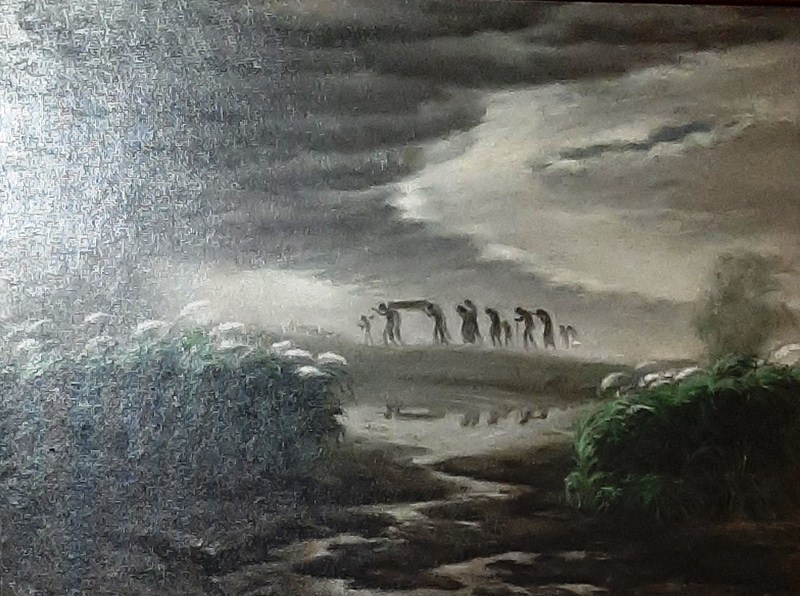Gallery XIV: Pillars of Philippine Modernism, a permanent exhibit at the third floor of the National Museum of Fine Arts, features Philippine modern art from the 1920s-1970s.
Check out “National Museum of Fine Arts”
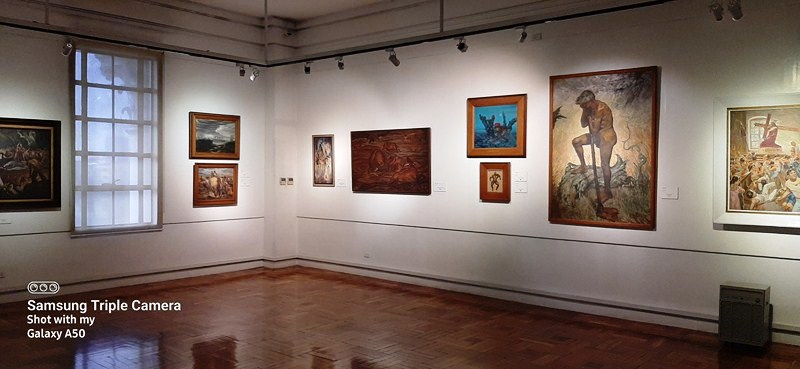 On display are works of five of the revolutionary Thirteen Moderns (a group of artists that broke away from the Conservatives led by Fernando Amorsolo) – Victorio C. Edades (1895-1985), Diosdado Lorenzo (1906-1984), Galo B. Ocampo (1913-1985), Anita Magsaysay-Ho (1914-2012) and Ricarte Puruganan (1912-1998).
On display are works of five of the revolutionary Thirteen Moderns (a group of artists that broke away from the Conservatives led by Fernando Amorsolo) – Victorio C. Edades (1895-1985), Diosdado Lorenzo (1906-1984), Galo B. Ocampo (1913-1985), Anita Magsaysay-Ho (1914-2012) and Ricarte Puruganan (1912-1998).
National Artist for Painting (1976) Victorio Candido Edades, the “Father” of Modern Philippine Art,” was an artist influenced deeply by his studies and exposure to the style in the United States.
He presented figures in muddy earth colors (yellow ochres and raw sienna accented by bold black contours), his subjects were distorted figures (those whose proportions defy classical measure) and his brush strokes were agitated and harsh as reflected in his oils on canvas – The Sketch (1928) and Modern Maria Clara (1958).
Nueva Ecija (San Isidro)-born Diosdado Magno Lorenzo, who had already spearheaded Philippine Modernism even before its emergence became mainstream in Philippine arts, painted in different media and genres.
The imagery of his work consisted, for the most part, of the countryside of San Isidro – its guileless, uncorrupted people; its magnificent trees and its pristine environment.
This imagery can be seen in five of his paintings displayed in the gallery – Barrio Scene (1970, oil on masonite board), An Old Woman with Mortar (1937, oil on board), Landscape (1966, oil on board) Gumamela (1975, oil on canvas) and A Barrio Girl (1946, oil on board).
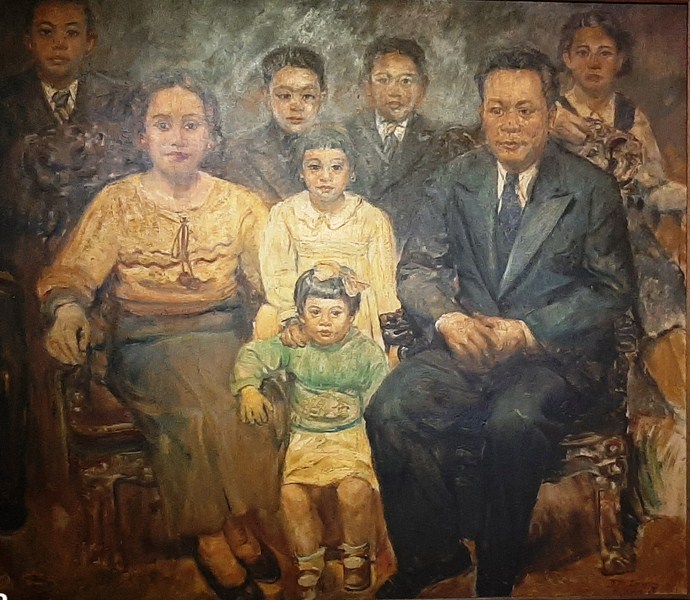
Portrait of Lucio R. Ildefonso, Alejandra Tagle Ildefonso and their Children (Diosdado M. Lorenzo, 1936, oil on canvas)
Also on display is his commissioned oil on canvas painting of Portrait of Lucio R. Ildefonso, Alejandra Tagle Ildefonso and their Children (1936).
Displayed together are two plaster of paris busts, titled Kiss,” sculpted by the artist himself during a sojourn in Italy in the early 1930s – Self Portrait (when Lorenzo was a young man in his 20s) and Portrait of Emilio Costamagna (a portrait of the father of Mario Costamagna, Lorenzo’s friend and fellow student at the Academy of San Luca in Italy).
Pampanga (Santa Rita)-born Galo B. Ocampo was also known for rejecting academic tradition and embracing Western modernism. Stylistically, his paintings, often blending Christian themes with references to Filipino indigeneity, showcase the influence of Cubism, Surrealism, and Expressionism on his works.
On display oil on canvas paintings of his Self Portrait (1982) and Portrait of a New York Lady (1947), gifted by Ocampo’s family to the nation in 2013.
Ilocano (Dingras, Ilocos Norte) painter Ricarte Madamba Puruganan, using bold strokes of thick impasto for which he was known, preferred fusing Philippine folk art themes with Modernist techniques, painting scenes closest to his heart – the rustic, the indigenous; quaint seascapes and evocative agricultural. On display are his The Black Nazarene of Quiapo (1937, oil on canvas) and Graveyard Scene (undated, oil on canvas)
Filipina painter Anita Magsaysay-Ho, the only female member of the “Thirteen Moderns,” specialized in Social Realism and post-Cubism in regard to women in Filipino culture. Her work appeals to Modernism by utilizing more abstract designs and styles rather than realistic approaches. The Portrait of Marylisde Jesus Sevilla (1958, oil on canvas), the first work of the artist to be included in the national collection, was generously gifted, by the sitter, to the nation in 2013.
Also represented in this gallery are painters of the Neo-Realist school, the second wave of Philippine Modernists. This post-war group of artists advocated a style that is representational in form but more open to various degrees of abstraction. They include Manuel Antonio Rodriguez Sr. (1912-2017), Romeo V. Tabuena (1921-2015), and Nena L. Saguil (1914-1994).
Romeo Villalba Tabuena, whose works primarily features figures pieced together from muted, monochromatic shapes, is best known for depictions, in oil acrylic and watercolor media, of Philippine rural landscapes (farms, carabaos, nipa huts, etc.) such as Nipa Huts on Stilts (1952, oil on canvas) and Carabaos in Pink (1957, oil on board).
Simplicia “Nena” Laconico Saguil, considered a pioneer of Filipino abstract art, is most known for her cosmic, organic, and spiritual abstract works depicting internal landscapes of feeling and imagination. Saguil created impressionistic and naturalistic figurative works, including landscapes and still lifes. On display at the gallery is A Filipina Maiden (oil on canvas)
Filipino printmaker Manuel Antonio Rodriguez Sr., also known by his nickname Mang Maning, was dubbed as the “Father of Philippine Printmaking.” The first Filipino to have exhibited his prints in international biennial shows, Rodriguez had a unique and unparalleled knack for abstract and figurative forms.
The graphic quality of his oil on canvas works (Returning From the Fields, 1949; and Feeding Time, 1967), borrows from his forte of printmaking.
Another Modernist painter featured in the gallery is Spanish-born (b. 1929, Reus, Catalonia) painter Juvenal Sanso, one of the foremost masters of Modernism in Philippine Art.
The graphic, textured works of Juvenal Sanso, best known for his surreal landscapes, are full of lush plant life and tropical skies painted in a bright palette culled from his idyllic childhood in the Philippines as seen in his Blue Floral (1965, acrylic on canvas).
His unusual Man with a Hoe (1950, oil on masonite), painted after World War II, features a naked man holding a hoe with his head downwards. It may be interpreted to depict the emotions and the traumatic experiences of the artist. Another of his works featured is Muscle Bound (1960, pen and ink on paper).
Seemingly out of place in the gallery is Nestor Garcia Leynes (1922-2016), regarded as one of the leaders of the “Magic Realist” movement of the Philippines. Typically, he painted idyllic scenes of Philippine rural life, much like his mentor Fernando Amorsolo, ranging from women sifting rice to harvest scenes, depicting romantic scenes in painstaking detail. However, his oil on canvas piece A Peasant’s Funeral (1948) is not representative of his work.
Gallery XIV – Pillars of Philippine Modernism: 3/F, National Museum of Fine Arts (NMFA), Padre Burgos Avenue, Ermita, Manila 1000, Metro Manila. Tel: (632) 8527-1215 and (632) 8298-1100. Email: inquiry@nationalmuseum.gov.ph. Website: nationalmuseum.gov.ph. Open Tuesdays to Sundays, 9 AM – 4PM. Admission is free. Coordinates: 14°35′13″N 120°58′52″E.

